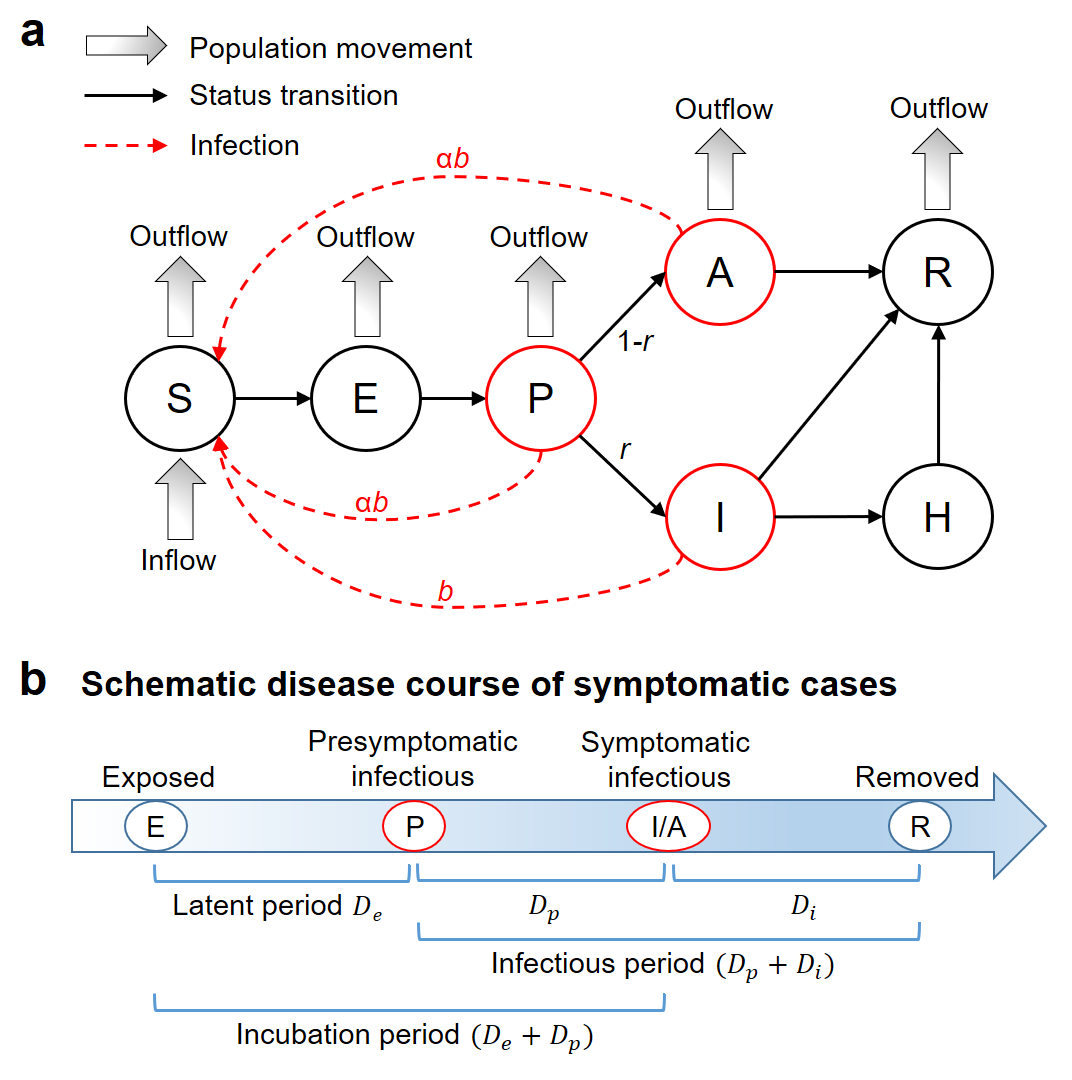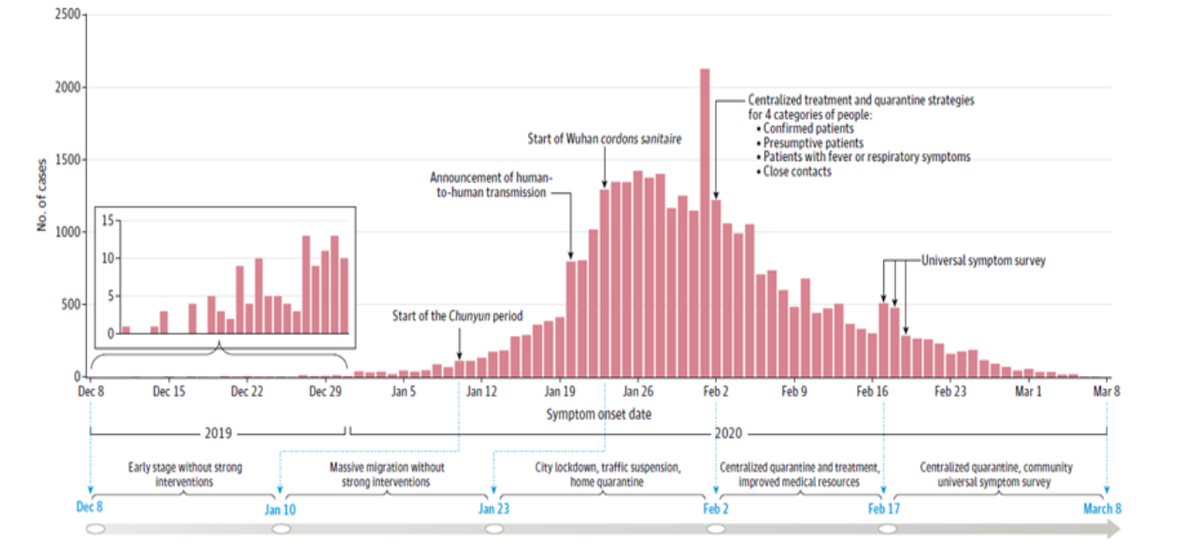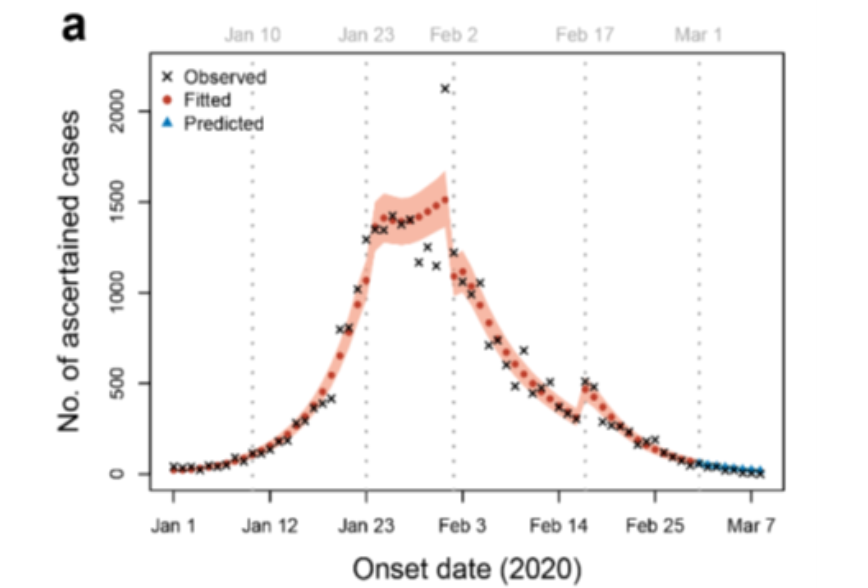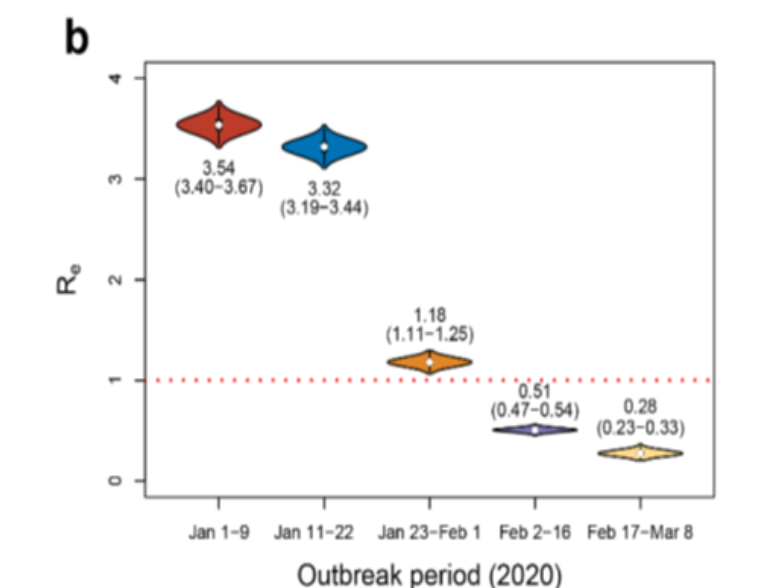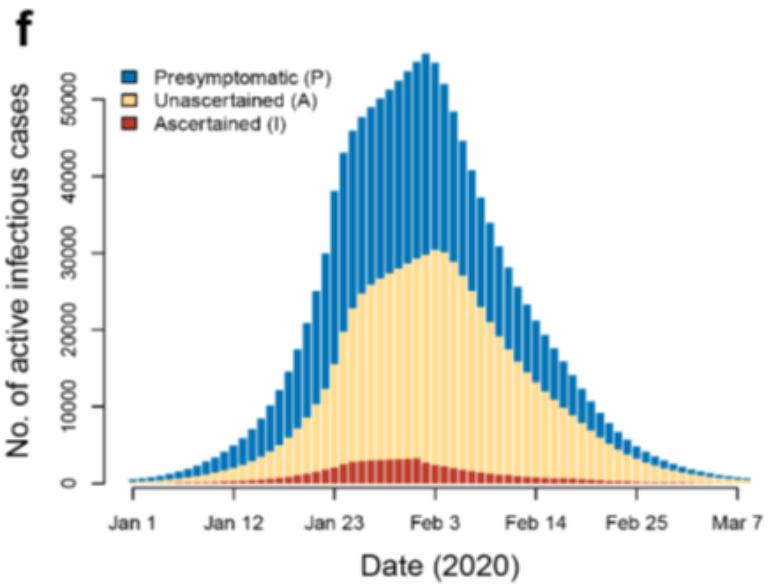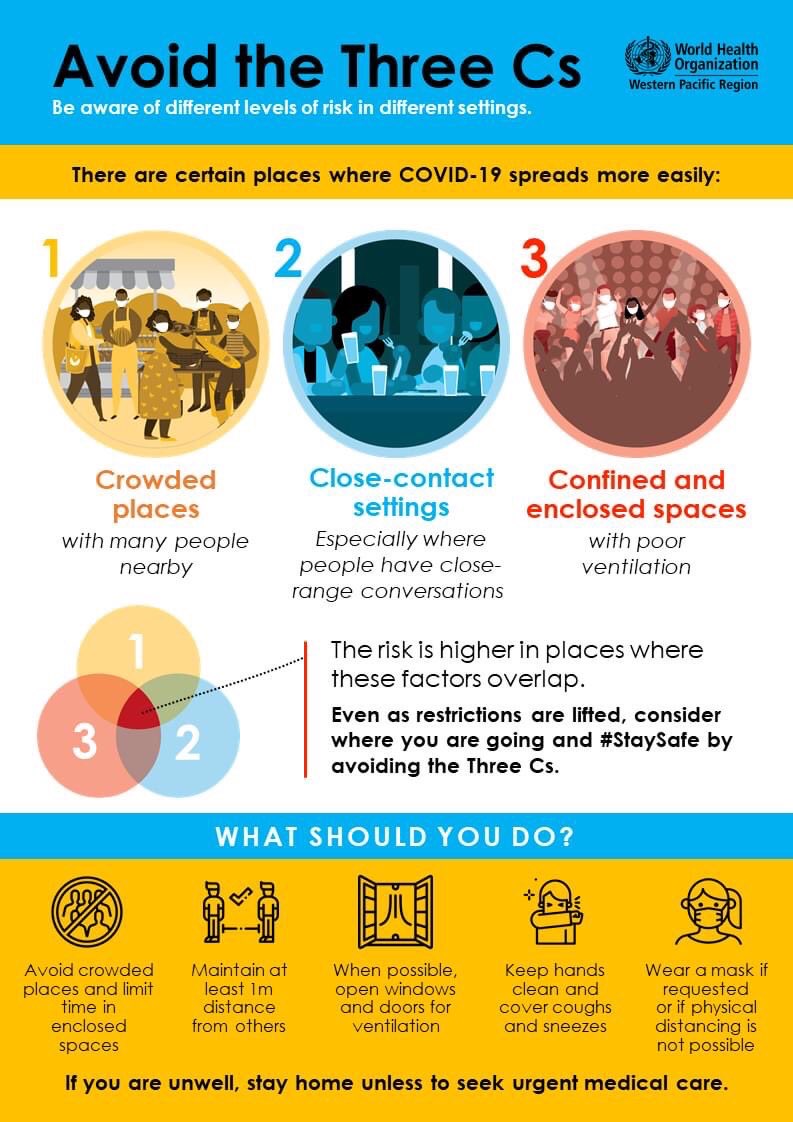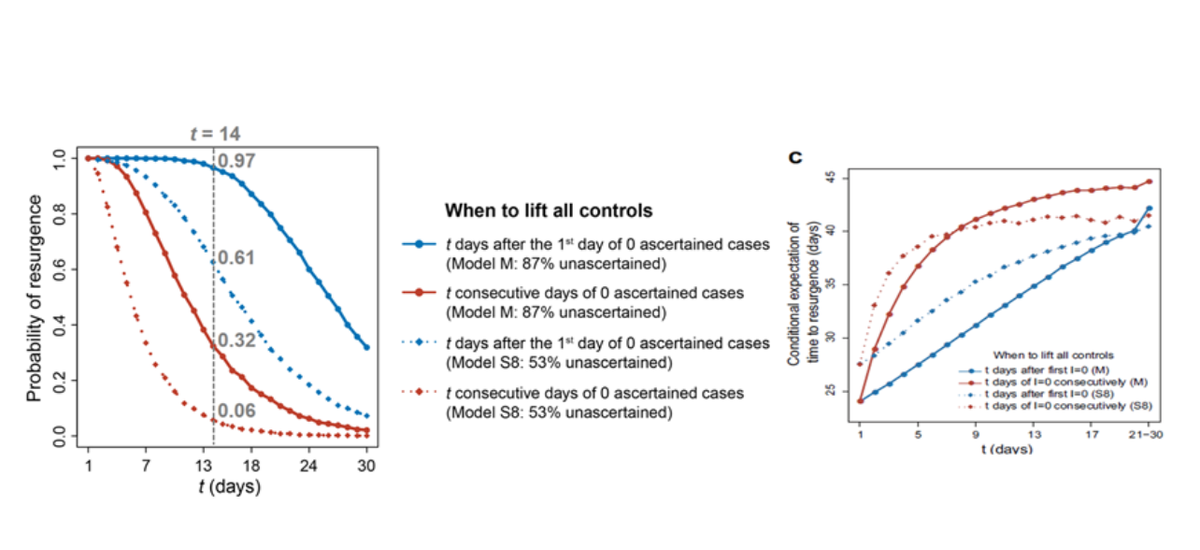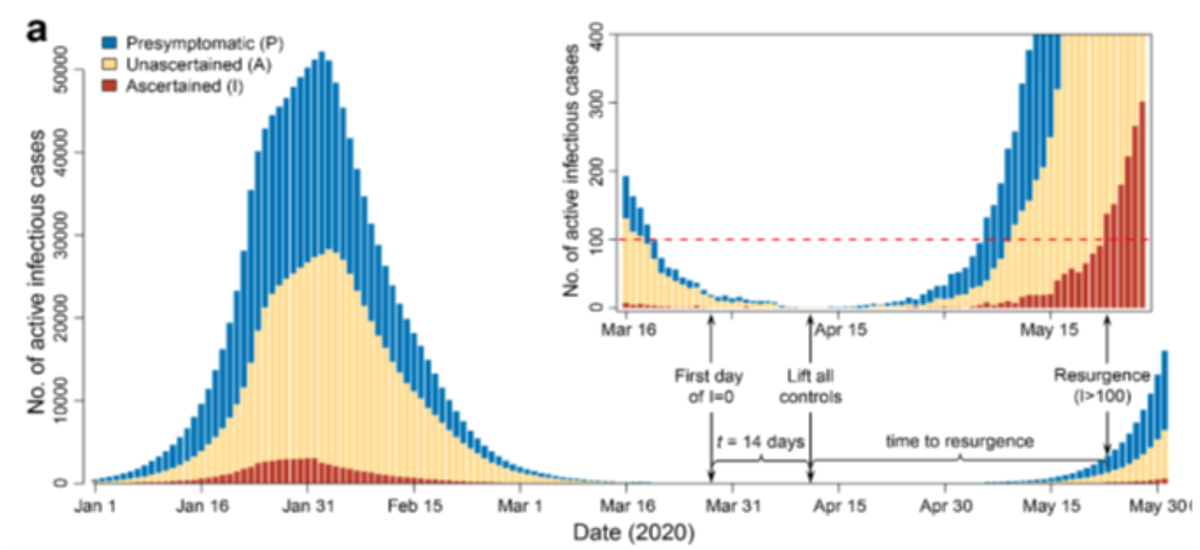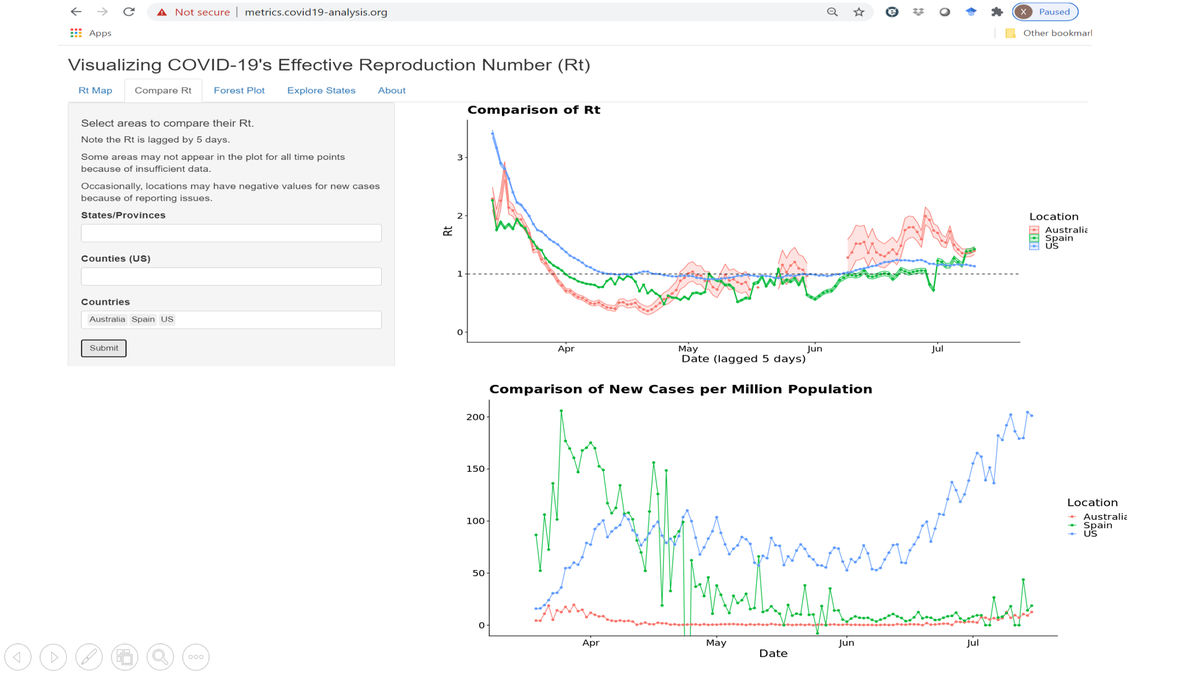Our paper “Reconstruction of full transmission dynamics of COVID-19 in Wuhan” is online in Nature. We showed two key features of COVID: High transmissibility (R0=3.5) & high covertness(up to 87% undetected cases), estimated the chance of resurgence(1/n) https://www.nature.com/articles/s41586-020-2554-8
It was a great pleasure to work with @chaolongwang. This paper is built upon our March 8 MedRxiv preprint. The first part of this preprint (epidemiology focus) was published in JAMA in April (Pan, et al, 2020). This is the second part (modeling focus)(2/n) https://www.medrxiv.org/content/10.1101/2020.03.03.20030593v1
High transmissibility means the virus is very infectious in the absence of interventions. High covertness means infections are hard to detect because many of infected cases are asymptomatic and mildly symptomatic. (3/n)
These two features combined suggest combating COVID-19 is much more challenging compared to SARS & MERS. The stealthy nature of the virus could result in a substantial # of undetected cases which post a risk of resurgence if reopening is too early with all measures lifted (4/n)
Our new model SAPHIRE extended the classic SEIR model by incorporating the features of COVID-19, including presymptomatic infectiousness and unascertained cases (who were likely to have mild or no symptoms). We also introduced an isolation compartment for ascertained cases (5/n)
We divided the outbreak into five periods based on key events and public health interventions, as shown in the figure below. Model parameters were allowed to vary across periods (6/n)
The estimated effective reproductive numbers were Re=3.54 and 3.32 in the first two periods (no interventions). After multipronged public health interventions, including lockdown, centralized isolation and quarantine, and universal screening, Re dropped to 0.28 after Feb 17 (8/n)
These multi-faceted interventions reduced the total infections until March 8 (1.5 months) by 96%. Important to note that multi-faceted interventions reduced not only the number of ascertained cases but more importantly the number of unascertained cases (9/n)
The virus is highly insidious. We estimated 87% of the infections might have gone undetected, with the lower bound of 53% if all cases were ascertained in period 1, despite the strong control measures. These undetected cases were mainly asymptomatic and mildly symptomatic (10/n)
The ascertained/detected cases only revealed the tip of the iceberg. These undetected cases can rapidly spread the virus without interventions. (11/n)
How to prevent from being infected by asymptomatic and mildly symptomatic cases, especially given we don’t know who have it: mask wearing; social distancing; avoid three Cs (WHO): Crowded places, close contact settings; confined and enclosed places (12/n)
We estimated total infections (detected & undetected cases) as 249,187, which gives an estimated prevalence=2.5% given the population size of Wuhan is 10 millions. Further investigation, e.g., serology studies in Wuhan, is needed to confirm the estimates. (13/n)
This finding is consistent with the emerging seroprevalence results in Europe and the U.S., which also suggested that many infections were undetected, likely because of mild or no symptoms (14/n)
The undetected/unascertained cases post a significant risk of resurgence if reopening is too early by lifting all control measures. A resurgence was defined as when the ascertained cases reached 100 after lifting controls (15/n)
If all restrictions are lifted after 14 days from the first day on which no cases are reported, the chances of resurgence are expected to be very high (up to 97%) & happen on day 32 after lifting restrictions,owing to the role of undetected cases with mild or no symptoms (16/n)
If all restrictions are lifted only after 14 consecutive days without cases, the probability of resurgence drops to 32%, and the surge is expected to be on 42 day after the lifting of restrictions (17/n).
Recent resurgences have been observed in several countries after reopening, including Australia, Spain and US: http://metrics.covid19-analysis.org . Undetected cases play an important role in leading to resurgence. (18/n)
To reduce the chance of resurgence, consider reopening when the number of cases is sufficiently small, and ensure control measures continue to be in place and keep up with compliance after reopening. Remain vigilant after reopening, and wear masks (19/n) https://www.nbcboston.com/news/local/gov-baker-to-provide-coronavirus-update-10/2160419/

 Read on Twitter
Read on Twitter